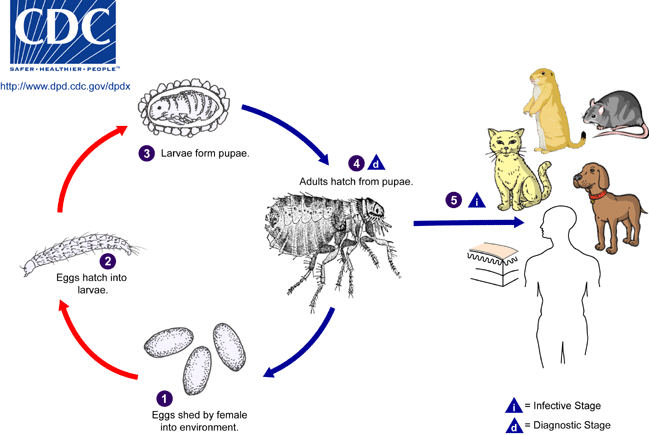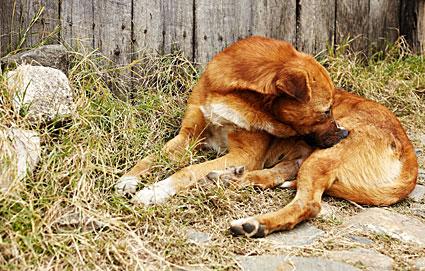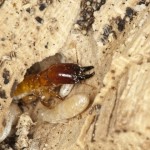Learn How To Get Rid Of Fleas In The House Safely And Effectively
Fleas are small parasite insects that feed on the blood of its host which are mostly animals even your domesticated cats and dogs are not safe from them. According to the Department of Entomology of the Texas A&M University, most problems of fleas in that State is caused by cat fleas or Ctenocephalides felis and Americans spend $9 billion yearly just for controlling the blood sucking pest and is one of the most expenses that pet owners are paying for in the US.
Fleas are not just pesky creatures but they also pose health risk to pets and humans alike. The most common health problems that you and your pets may get from fleas are the following:
• Flea Allergic Dermatitis – this is the most common condition that fleas can give to your pets. As they puncture into your pet’s skin to feed, their saliva can cause your pets system to release antigen-antibodies and this reaction will result to skin inflammation and itchiness. This is why some dogs are constantly scratching their body and it was such a nuisance to them.
• Tapeworms – this parasite thrive in flea’s body because tapeworm’s eggs are the primary food of flea larva and as your pets groom themselves by licking and nipping to get rid of their fleas, they can accidentally eat infected fleas thus transmitting the tapeworm in their body. But animals are not the only ones who can be infected with tapeworm because humans also do and they can get it when they ingest a flea that carries tapeworm eggs.
• The bubonic plague – although this is historical, fleas play an important role in transmitting the disease to humans that claims a third of human population during the 14th century that started in Europe. The disease spreads as fleas feed on rats that are infected with the Y. pestis bacteria and then transmit it to humans through their bites. Today, very few people die from this disease due to the availability of medical treatment such as antibiotics but it is still deadly when left untreated.
• Murine typhus – another disease human gets from fleas and comes from fleas feces transported to the body through cuts or breakage in your skin. Also called as an endemic typhus, this disease has symptoms that include fever, headache, joint pain, muscle pain, nausea and vomiting. 40–50% of patients will develop a discrete rash six days after the onset of signs. More or less 45% will develop neurological signs such as stupor, confusion, seizures or imbalance. Symptoms may look like those of possibly Rocky
Mountain spotted fever rubella or measles. These symptoms are likely caused by a vasculitis caused by the rickettsia. (source: Wikipedia).
As you can see fleas should never be underestimated as they can bring diseases and discomforts to you and your household or backyard pets. However, if your house or place is infested with fleas there are many things that you can do to get rid of them and these safe and effective tips on how to get rid of fleas in the house will help you with your pesky problem:
Understanding flea life cycle

First thing to do is to understand how fleas live and reproduce. This will enable you to schedule your flea control program. Fleas scatter their eggs everywhere in your house – carpets, TV drawer, under the table etc. and they hatch between 5 to 20 days. The eggs are also very viable that even when you get rid of adult fleas another batch will soon take their place. So, knowing how to control both adults and eggs will increase your chances of eliminating flea infestation.
Identify the source

Of course if you have a pet inside your house, you definitely know where fleas might have come from however, this is not always the circumstances as infestation may also come from your neighbours if you are living in a tight community. In this case, you might want to talk with your neighbour for a mutual effort to control the flea infestation in your area. If you do not have a nearby neighbour and you do not suspect any animal bringing fleas into your house, then it would be much easier to control the infestation.
Contact pest control professionals

This is the easiest thing for you to do to eliminate your flea problem and is a good start to continue your flea control routine if you are keeping a pet inside the house. For safety, you have to make sure that your pets are secluded when the pest control people administer their agents that will eliminate both adults and eggs because the chemical might be harmful to them. After the service, it will be time for you to bath your pets with anti-flea shampoo and clean your surroundings to eliminate dispose of the remaining eggs or larvae.
Make your routine flea control schedule

Make sure that you bathe your pets weekly with anti-flea agents that are safe for them, for cats and dogs, you can use anti-flea collars or any agents that your vet may recommend, usually, collars and drops last for a month of flea protection. Regularly clean your surroundings and you can apply botanical dust with a mixture of boric acid, this agent is poisonous to flea’s stomach and it also kills eggs and larvae.
Carbaryl is also an effective agent but make sure not to inhale the powder. Always vacuum your house and discard the bag immediately after cleaning.
In controlling flea infestation in your house, safety to humans and your pets should still be your concern more than eliminating the pests because the gents or the chemical that you use may be hazardous to you and your pet’s health. Always consult your vets for anti-flea agent for animals and follow the safety instructions of applying anti flea chemicals in the surrounding of your house to avoid accidents of poisoning especially when you have small children in the house.
If you have other information about flea control, feel free to leave a comment below.








